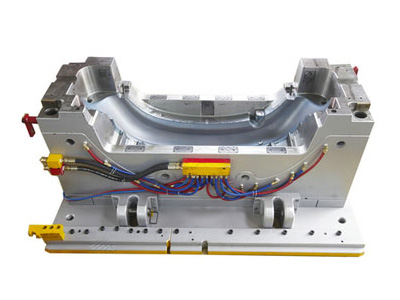In the precision injection molding process, when the me […]
In the precision injection molding process, when the melt fills the cavity, if two or more melts have already cooled when they meet, so that they cannot be completely merged, a linear groove will be formed at the confluence and a weld line will be formed.
Generally speaking, precision injection mold processing can easily cause weld marks. The reasons for this problem caused by precision injection mold processing are summarized as follows:
1. Reason: poor mold exhaust. First, check whether the melt or other objects are solidified, and whether there are foreign objects at the gate to prevent the mold vents from clogging.
Solution: If the carbonization point still appears after the blockage is removed, ventilation holes should be added at the mold joint, or by repositioning the gate, or by appropriately reducing the clamping force and increasing the exhaust gap to achieve re-closing and accelerating confluence Converge. In terms of process operation, measures can also be taken to reduce the material temperature and mold temperature, shorten the high-pressure injection time, and reduce the injection pressure.
2. Reason: Improper use of release agent for precision injection mold processing.
Solution: In precision injection mold processing and molding, usually only a small amount of release agent is evenly coated on the parts that are not easy to peel off, such as thread ends. In principle, the amount of release agent should be reduced as much as possible.
3. Reason: The temperature of the processing material of the precision injection mold is too low, and the low-temperature melting material has poor shunting and convergence performance, which is easy to form welding marks. If the inner and outer surfaces of the plastic part have weld fine lines in the same place, it is usually because the material temperature is too low that the welding fails.
Solution: The temperature of the barrel and nozzle can be appropriately increased, or the spraying time can be extended to increase the temperature of the material. At the same time, the throughput of the coolant in the mold should be controlled to appropriately increase the temperature of the three-color vertical injection mold. Under normal circumstances, the strength of the plastic part at the weld is poor. If local heating is performed on the corresponding part of the automobile injection mold where welding marks are generated, and the local temperature of the welded part of the molded part increases, the strength of the welded part of the plastic part generally increases.
4. Reason: The processing design of precision injection mold is unreasonable.
Solution: If the wall thickness of the plastic part is too thin or too thick, and the plug-in is too large, it will cause poor welding. When designing the plastic main body structure, it should be ensured that the thinnest part of the plastic part must be greater than the minimum wall thickness allowed during the molding process. In addition, the use of inserts should be minimized, and the wall thickness should be as uniform as possible.
www.xlpmould.net


Add: No.9 Hengtai Road, Tinghu Economic Development Zone, Yancheng City, Jiangsu, China
Tel: 0086-515-89806501
Fax: 0086-515-89806502
E-mail: [email protected]

 TOP
TOP